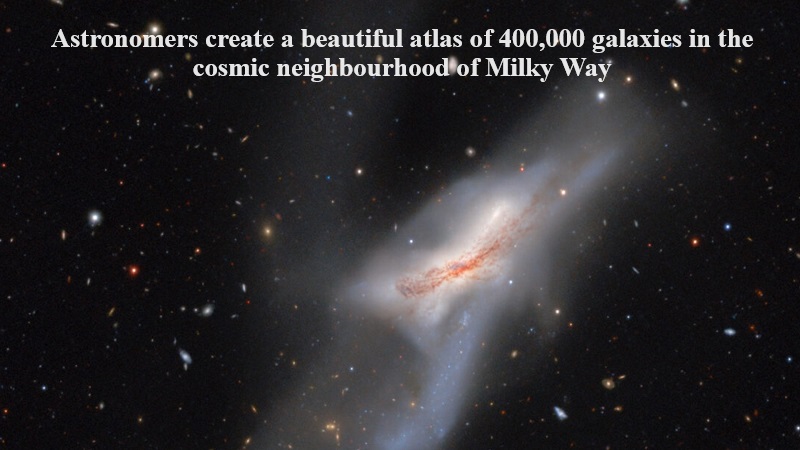
Astronomers have compiled a stunning atlas featuring around 400,000 galaxies in the cosmic vicinity of our Milky Way. This atlas showcases intricate images of numerous galaxies, providing not only a resource for astronomers but also granting the general public free online access.
Referred to as the Siena Galaxy Atlas (SGA), this cosmic atlas is a digital compendium designed to enhance our understanding of the universe by focusing on various galaxies that are within our knowledge.
The creation of this digital galaxy atlas involved the utilization of data from three astronomical surveys carried out between 2014 and 2017 at the Cerro Tololo Inter-American Observatory (CTIO) and the Kitt Peak National Observatory (KPNO). These surveys collectively constitute the DESI Legacy Surveys.
Cosmic atlases serve as invaluable tools for astronomers, enabling the identification of patterns that aid in categorizing new findings, such as stars that undergo sudden bursts of brightness followed by fading, often referred to as ‘transients’. Additionally, these atlases allow astronomers to pinpoint objects that warrant further in-depth investigations.
Maintaining and updating these databases is imperative to keep pace with new discoveries, particularly in this modern age when telescope technologies are advancing rapidly. The SGA atlas stands as a pinnacle of precision in this aspect.
The SGA is poised to become a treasure trove of galactic information, serving as a resource for scientists seeking to explore an array of topics, ranging from the origins and evolution of galaxies to the distribution of dark matter and the propagation of gravitational waves through space.
John Moustakas, the project leader of SGA and a physics professor at Siena College, remarked, “Nearby large galaxies are important because we can study them in more detail than any other galaxies in the universe; they are our cosmic neighbors. Not only are they strikingly beautiful, but they also hold the key to understanding how galaxies form and evolve, including our very own Milky Way galaxy.”

Post Your Comments